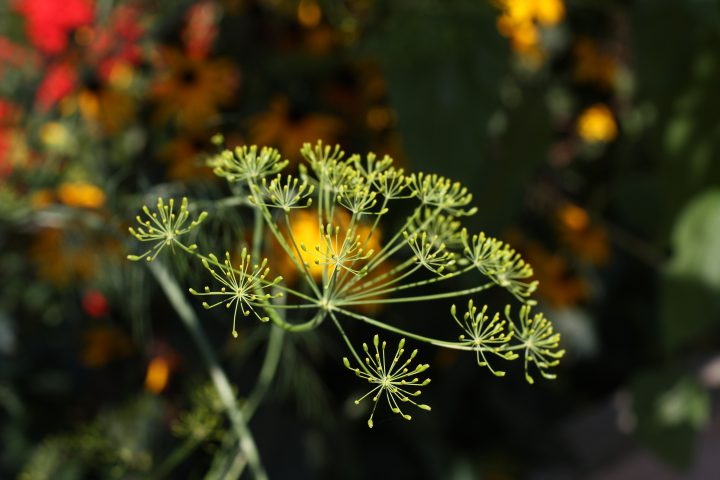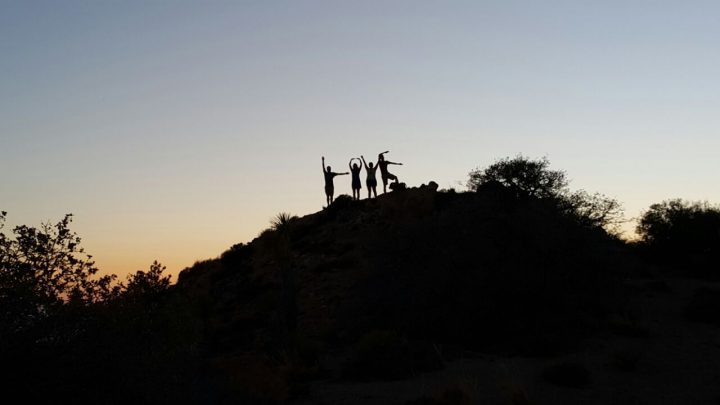Tag Archive: equity
May 17, 2018
“Only connect! That was the whole of her sermon. Only connect the prose and the passion, and both will be exalted, and human love will be seen at its height. Live in fragments no longer.”
E.M. Forster, from Howard’s End
This is an excerpt from the final post in a series of five focused on networks for change in education and learning that have appeared on the Education Week and Next Generation Learning Challenges websites.
In this series on network design and network thinking, I explored the power and promise of networks as residing in how connection and flow contribute to life, liveliness and learning. See, especially, Connection is Fundamental.
In Why Linking Matters, I looked at how certain networks can more optimally create what are known as “network effects,” including small world reach, rapid dissemination, resilience, and adaptation.
I also noted, in Structure Matters in particular, that living systems–including classrooms, schools, school districts, and communities–are rooted in patterns of connection and flow. That’s why shifts in connections–between people, groups, and institutions–as well as flows of various kinds of resources can equate with systemic change, and ideally they can lead to greater health (in other words, equity, prosperity, sustainability).
Networks can also deliver myriad benefits to individual participants, including: inspiration; mutual support; learning and skill development; greater access to information, funding, and other resources; greater systemic or contextual awareness; breaking out of isolation and being a part of something larger; amplification of one’s voice and efforts; and new partnerships and joint projects.
It’s also true, however, that not every network or network activity creates all of these effects and outcomes. The last two posts looked at two factors that contribute to whether networks are able to deliver robust value to individual participants and the whole, including network structure and what form leadership takes. Networks are by no means a panacea to social and environmental issues and can easily replicate and exacerbate social inequities and environmentally extractive practice. So values certainly have a place, as does paying close attention to dynamics of power and privilege.
It is also the case that individual and collective behavior on a day-to-day basis have a lot to say about what networks are able to create. The following is a list of 25 behaviors for you to consider as part of your network practice as an educator:
- Weave connections and close triangles to create more intricacy in the network. Closing triangles means introducing people to one another, as opposed to networking for one’s own self, essentially a mesh or distributed structure rather than a hub-and-spoke structure.
- Create connections across boundaries/dimensions of difference. Invite and promote diversity in the network, which can contribute to resilience and innovation.
- Promote and pay attention to equity throughout the network. Equity here includes ensuring everyone has access to the resources and opportunities that can improve the quality of life and learning. Equity impact assessments are one helpful tool on this front.
- Name and work with power dynamics and unearned privilege in the direction of equity.
- Be aware of how implicit bias impacts your thinking and actions in the network. Become familiar with and practice de-biasing strategies.
- Think, learn, and work out loud, in the company of others or through virtual means. This contributes to the abundance of resources and learning in the network.
- Don’t hoard or be a bottleneck. Keep information and other resources flowing in the network.
- Identify and articulate your own needs and share them with others. Making requests can bring a network to life as people generally like to be helpful!
- Stay curious and ask questions; inquire of others to draw out common values, explicit and tacit knowledge, and other assets.
- Make ongoing generous offers to others, including services, information, connections.
For behaviors 11-25, see this link.
“… Keep reaching out, keep bringing in./This is how we are going to live for a long time: not always,/for every gardener knows that after the digging, after/the planting, after the long season of tending and growth, the harvest comes.”
Marge Piercy, from “The Seven of Pentacles”
April 4, 2018

The following is an excerpt from the third in a series of posts on networks, education and learning. The full post and series are published on the Education Week website. This post builds on two previous ones – Connection is Fundamental and Why Linking Matters – and looks at the importance of structure in supporting network effects while considering equity and power dynamics.
Networks are not necessarily easy to control in terms of their overall structure, especially when they are large and complex (diverse and widely distributed). And it is important to note that there are network phenomena that may tend to pull a networked endeavor in a certain structural direction.
For example, homophily is a phenomenon where social networks tend to form clusters of nodes with similar properties or attributes. This is captured by the adages, “Birds of a feather flock together,” and “Those close by form tight ties.” The result can be self-segregation along various lines of difference, for example racial, cultural, or class divisions in schools. Or consider the current pronounced political polarization in our country. The key to confronting homophily is to be both aware of the tendency and diligent about creating structures and incentives for bridging across boundaries.
“Opportunity … depends, at least in part, on our inherited networks.”
One of the great hopes and marvels of networks is that they can be liberating, especially in the face of bureaucracy and various barriers (see more about “network effects” in the previous post in this series). While this is worthy of celebration, another important phenomenon to be aware of is that networks can be deeply inequitable.
Read More
March 10, 2018
“Relationship is the fundamental truth of this world of appearance.”
-Rabindranath Tagore
The following is a segment from the first post in a series focused on network theory and its actual and potential applications to education and learning. This series appears on the Education Week website and was invited by Next Generation Learning Challenges (NGLC) as it explores the potential of networks to advance equity, adaptability and excellence in public education …
Network theory is on the one hand a new and emerging interdisciplinary science and on the other hand it is ancient, grounded in indigenous and experiential ways of knowing about the reality of interconnectedness. Another important element of “network science” is imagination–the use of creative expression and metaphor that recognizes and works with relationship and relatedness that can help to guide our minds, hearts, and hands. These posts will draw insight from this broader understanding of network theory. This first post offers a larger view of the nature and potential of networks in our lives.
There is a lot of talk about networks these days. And there is considerable hope and effort being put into more interconnected ways of working and learning in order to bring about much needed innovation and change in multiple fields, including education. This is exciting, and at the same time I am concerned that the conversation can be relatively narrow, or leap ahead of some deeper insights of network theory and practice. In so doing there is a risk of not getting to the more promising potential of networks.
Connection is fundamental. This is a core observation of network theory (and various wisdom traditions). Network theory starts by pointing to the fact that we often talk about the world in terms of individual things and their properties. This kind of approach may work in situations and in systems that are fairly simple and relatively static. But when the interactions and the complexity of the elements in a system increase, it is the connections that determine the characteristics of the elements in the system and its overall health. This holds true for any kind of dynamic living system–ecosystems, human communities, economies, etc.
“Network theory suggests that what a system becomes emerges from the complex, responsive relationships of its members, continuously developing in communication.”
-Esko Kilpi
Life is at base a network. It thrives on connection. We all know this, experientially, because we are alive! And when we are not feeling alive or lively it is often because we are disconnected, cut off in some way–from other people, from the natural world, from our selves (feelings, bodies, values), from power or a sense of purpose. (See the UK’s recent move, incidentally, to appoint a Minister of Loneliness to address the multiple ills stemming from growing social isolation). Life thrives on connection. …
To continue reading this post, follow this link.
January 24, 2018
“The most robust and resilient networks are those that create additional value for each participant while strengthening a community or ecosystem as a whole.”

Return-on-investment (ROI) is not a term that I love, especially given how militantly utilitarian and narrowly it is often considered and applied. My friend, mentor, business consultant and holistic thinker Carol Sanford refers to ROI as “the future increase in value that is expected when the initial capital contribution is made.” Carol is quick to point out that capital can take many forms (financial, intellectual, social, spiritual, natural, etc.), and for network participants (or let’s call them “co-creators”) this often takes the form of investments of time, money, knowledge, creativity, and social connections.
Why would co-creators in networks take the time and risk to make such an investment? What is the expected return? Presumably, when we are talking about networks for social change, the principle driver is the desire to make a meaningful difference for people, places and purposes they care about and that they sense will be more positively impacted through network activity. Co-creators are also “kept in the network game” if participation enhances their own capabilities, grows and deepens their connections, and gives them increased opportunities to be creative, and perhaps even find a place of belonging! Read More
January 3, 2018
“We rise and fall and light from dying embers, remembrances that hope and love last longer
And love is love is love is love is love is love is love is love, cannot be killed or swept aside.”
– Lin Manuel Miranda
We know we are not alone at IISC when we say that 2017 left many of us a bit exhausted and breathless, if not somewhat dumbfounded. What occasionally felt like the wheels coming off of our country’s management and morality caught us by varying degrees of surprise, which is not to say that the underlying frustration and ongoing dynamics of “othering” were necessarily shocking. Rather, the unabashed in-your-face tenor of it all got to points where it was all I could do to stay even minimally tuned in to have at least a fingernail on the pulse of things (but really, there were few places to hide!).
I am grateful that as an organization we take a break at the end of the year to rest, restore and reflect. And while some of us may feel like we could use another week (or two), I for one feel ready and resolved to step boldly into 2018 with an open heart and humble sense of not knowing (what will happen, what is in others’ hearts and minds, what the answers are). I would characterize this as a stance of love or loving kindness. Read More
November 20, 2017
“We know that there is no help for us but from one another, that no hand will save us if we do not reach out our hand.”
– URSULA K. Le GUIN

Image by Stephen Bowler, shared under provisions of Creative Commons Attribution license 2.0.
A note on the quotes below (and the Le Guin quote above): I am grateful for the beautiful piece by Evan Bissel, “Frames for Life, Liberation and Belonging,” which appears in the Othering and Belonging Journal. This piece lifts up some central elements of an emerging and humanizing narrative for our times, with focus on themes such as transition, liberation, belonging, commons, interconnection, abundance, sacred, curiosity, play, and place. I strongly encourage readers to check it out, to sit with the piece and let it soak in, and to share it.
This post follows the thread of a conversation that has been evolving across events I have been involved with the past few months, and a bigger and broader conversation that is clearly informing it. This is certainly not a new conversation, but there seems to be a renewed or perhaps more public vigor to it, at least in multi-racial and multi-generational social change groups and initiatives with which I have been involved.
It has cropped up in a network leadership program where a discussion about the difference between working for equity and working for justice pointed in the direction of the need to pursue liberation, and not simply inclusion and accommodation in fundamentally harmful systems. Read More
September 19, 2017
One of the questions that often comes up in our popular workshop, Facilitative Leadership for Social Change goes something like this,
“It’s great that I’m learning all of these practical leadership and facilitation skills, but what happens when I’m not the one leading or facilitating?”
How can we keep things rolling when we aren’t formally in charge and when formal leadership is perhaps not so skillful? My answer: There’s usually some opportunity to lead, ask good questions, and to facilitate from the chair! Read More
June 7, 2017
A couple of weeks ago, IISC was invited to offer a post-conference session at the Collective Impact Forum Conference in Boston. The title of this 8 hour session spread over two days was “Advancing Racial Justice Through and Within Collective Impact.” This was an opportunity for Cynthia Silva Parker and Curtis Ogden to formalize our ongoing efforts to bring IISC’s core collaborative methods, frameworks and a variety of racial justice content and tools to the different elements of the Collective Impact framework.
We were heartened to see and hear the many conversations about racial equity during the main conference proceedings, and noted good and challenging questions and exploration about the fit between the Collective Impact model, such as it has been formally presented and understood, and community organizing and power building work. These conversations continued in some form or fashion during our session. Read More
May 29, 2017
I recently received an email from the NorthSky Nonprofit Network about a practice group they have called the “Network Sandbox.” They introduce a tool (for “Tuesday Tool Time”) and invite members to play with it. I was happy to be told that they recently incorporated “connection stories” as a tool. Here is their invitation to participants to stretch and innovate:
This week’s tool is inspired by the new connections catalyzed by the mini-grants. While the survey we used collected some anecdotal information about the new connections, it left all of us wanting more… richer, deeper stories about these connections. Curtis Ogden from the Interaction Institute for Social Change (IISC), calls connection stories “critical nutrients” for networks that “feed a network forward.”
Tool: Connection Stories
Source: Interaction Institute for Social Change
Purpose: Collect and share stories of connections that have happened because of networks and share them back to the network to inspire more of the same.
From Curtis’s blog: Making these stories more explicit and accessible can have a number of different impacts:
- They model the importance of reaching out across boundaries and to “the other”
- They encourage network behaviors that build a foundation of trust and understanding, which …
- Contribute to “network effects” such as resilience, adaptation, and innovation.
- They can encourage cultures of equity, inclusion and diversity.

April 26, 2017
The human heart is the first home of democracy. It is where we embrace our questions. Can we be equitable? Can we be generous? Can we listen with our whole beings, not just our minds, and offer our attention rather than our opinions? And do we have enough resolve in our hearts to act courageously, relentlessly, without giving up – ever – trusting our fellow citizens to join with us in our determined pursuit of a living democracy? ~Terry Tempest Williams
In Turkey, voters just granted the Prime Minister additional powers. In the US, many people have long been fond of simple solutions. Today that plays out with support of a bombast who is inconsistent and offers solutions that exacerbate underlying problems.
When we work with clients, it also seems like there is a pull to simplicity, especially around issues of diversity and equity.
We field many calls from organizations and networks eager to address issues of racism. In its caricature state, which is all too common, the request is for a two-hour workshop for staff. The hope is that with a few hours of filling smart brains with a new understanding—of the history of racism, or of implicit bias, or levels of oppression—that then things will be okay.
This is false. A two-hour workshop can open some new understanding or potentially be used to make a case for change, but in no way does not even put you on the road to okay.
How is it that smart people believe that a little more in the way of “smarts” will undo a complex historical reality routed in policy, cultural narrative and economics?
Some of it seems to be a wish for easy and for ease. Many white people want the magic bullet or the easy solution to our own racism and that of our country and our organizations. We are not used to acknowledging that it took a lot of work to dig the hole that we are in and that it will take even more work to get out. Hoping that two hours or one day can give a diverse group the knowledge, tools, and understanding to create systemic change is simply a wish for simple.
In addition, there are systems that support the quest for this to be simple. For example, funders may offer relatively small dollars for organizational change efforts or not prioritize learning about systems of oppression at all. The push is almost always for fast outcomes and it seems risky to slow down and support the harder efforts that will ultimately be successful. Many leaders of our organizations, foundations, and government institutions have ourselves benefitted from the structures of racism and are content (wittingly or unwittingly) not to rock the boat.
For people working on systemic change, our job is to communicate that change is both hard and worthy. To want change requires more than a workshop; it is a commitment to put in the time, the dollars, and the effort. We know that effective equity efforts require work on multiple levels.
It may not be easy but it is fun and powerful to see the changes along the way. Change can beget more change. Change includes:
- New and deep relationships that expand what is possible and build new ways of being
- More equitable hiring and purchasing policies, investing in long term economic change
- Policies in an organization that are constructed to undo the bias that is both implicit and explicit in our minds and our organizations.
I will write more in the coming weeks about examples of change as a motivation for those moments when we think oppression, racism, and inequity are solvable in a two-hour workshop. IISC is interested in working with groups that choose to avoid the simple and invest with their hearts and time the work that can lead to meaningful change.
March 10, 2017
“We never know how our small activities will affect others through the invisible fabric of our connectedness. In this exquisitely connected world, it’s never a question of ‘critical mass.’ It’s always about critical connections.”
Grace Lee Boggs
The past twelve months I had the pleasure of working with a team from Food Solutions New England to design and facilitate its first Network Leadership Institute. This initiative grew out of FSNE’s ongoing commitment to cultivating thought leadership and network leadership “to support the emergence and viability of a New England food system that is a driver of healthy food for all, racial equity, sustainable farming and fishing, and thriving communities.” Another impetus for the Institute was a year spent doing system mapping and analysis that revealed four leverage areas for advancing a just, sustainable and democratically-owned and operated regional food system, including cultivating and connecting leadership. Read More
February 27, 2017
“We add value to society-at-large when we dare to connect.”
– Gibran Rivera

For the past five years, Food Solutions New England has been building a regional collaborative network organized to support the emergence and sustainability of a New England food system that is a driver of healthy food for all, racial equity, sustainable farming and fishing, and thriving communities. This network was formally launched with support of IISC in response to a shared sense that greater connection, trust, deep collaboration and innovation were needed across food system efforts throughout the region. To create this connectivity, we have engaged in a number of structural and procedural innovations, including creating an Ambassador Team to do network weaving and the 21 Day Racial Equity Habit Building Challenge, which will happen again this year from April 9-29.
Along the way, we have been witnessing some important boundary-crossing and new partnerships emerging. One example in particular stands out, stemming from a field visit a number of us did to a fishing community in the region to learn more about the challenges to and innovations among small scale fishermen. Our tour was organized by a network team member and community organizer of color who focuses on fisheries who has many deep connections in that community. One of the attendees of the tour was an older white man who does policy work in another state. Personality-wise, these two individuals are quite different, along with their chosen points of intervention in the food system. And yet on the heels of that tour, the organizer and the policy wonk became good friends and colleagues who continue to learn from one another and coordinate more around fisheries and policy analysis/development, creating new opportunities in and across their respective worlds. Read More











